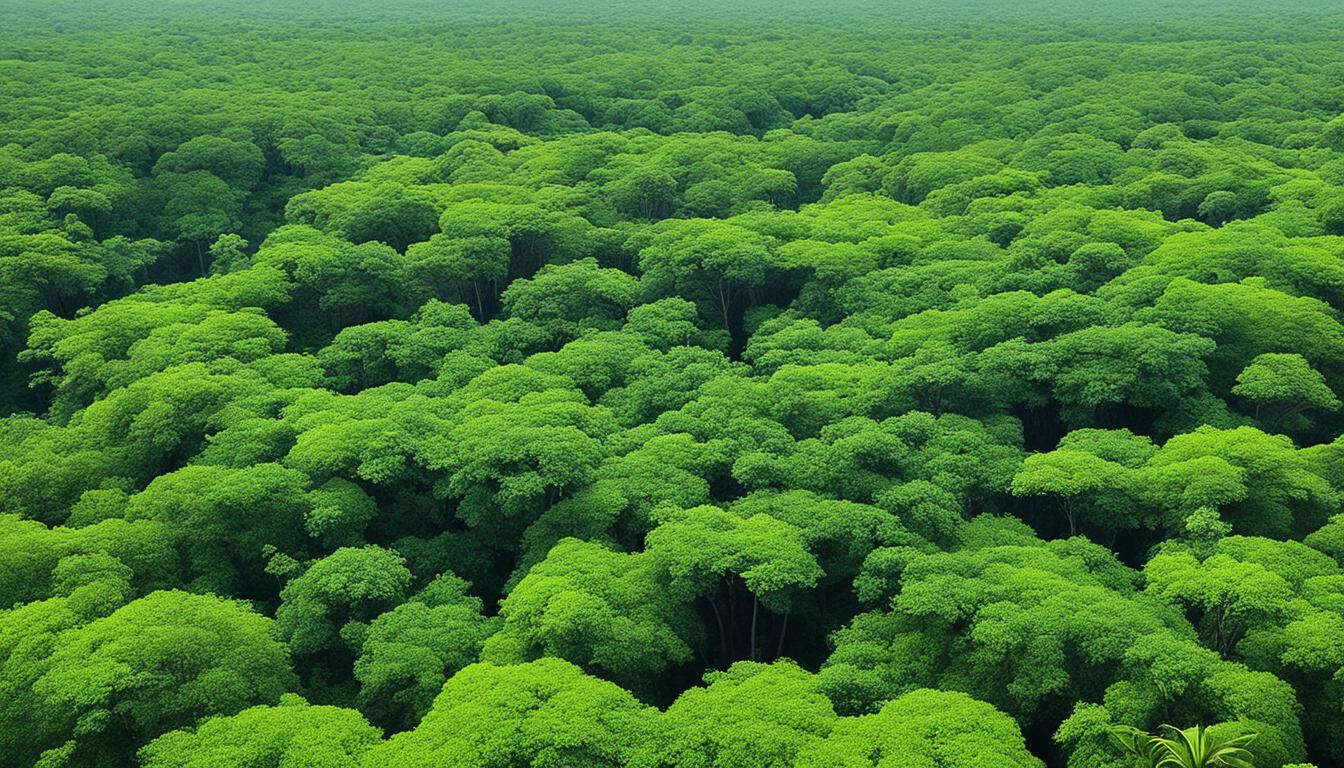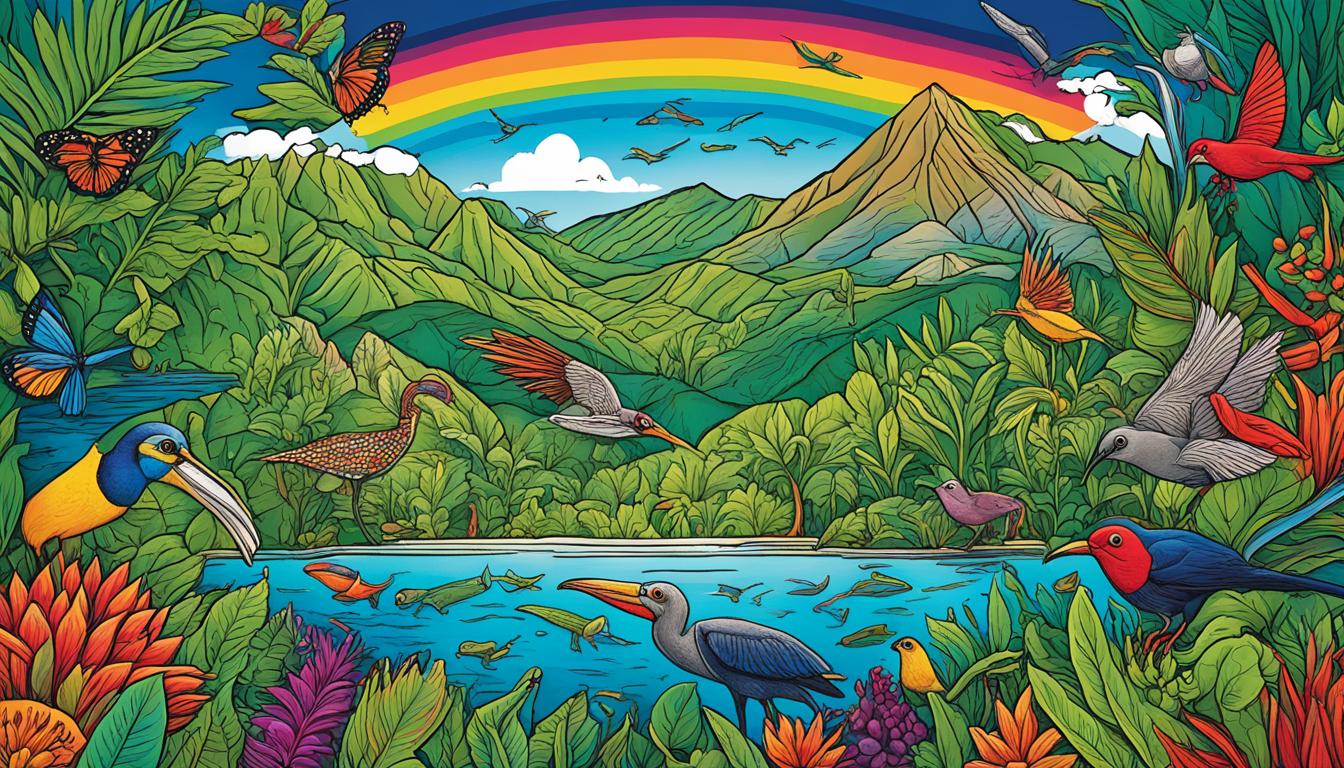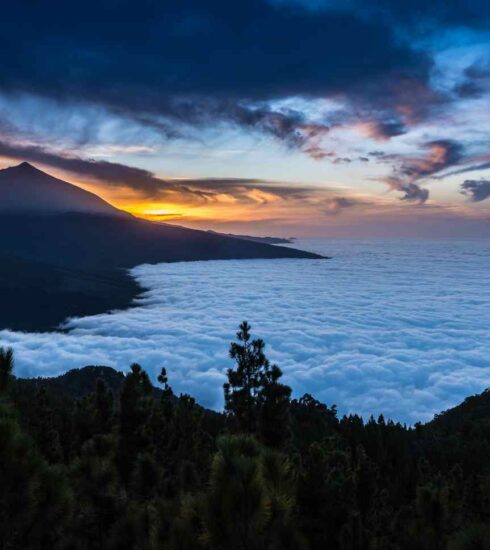Guyana Biodiversity: Animal and Plant Species and What Is Under Threat
Did you know that Guyana is home to one of the most diverse ecosystems on the planet? With its vast rainforests, wetlands, and savannahs, this South American country is a biodiversity hotspot that supports a rich variety of native flora and fauna. However, the future of Guyana’s remarkable biodiversity is under threat from human activities and climate change.
Key Takeaways
- Guyana is known for its incredible biodiversity, which includes unique ecosystems like rainforests, wetlands, and savannahs.
- Direct threats to Guyana’s biodiversity come from economic activities such as mining, logging, and over-fishing.
- Indirect threats arise from challenges with policies, legislation, and invasive alien species.
- The country has implemented conservation efforts, established protected areas, and developed strategies to protect its biodiversity.
- Addressing climate change and promoting sustainable development are crucial for the long-term preservation of Guyana’s biodiversity.
Guyana’s Unique Ecosystems and Biodiversity
Guyana, located between the Amazon Region and the Guiana Shield, boasts a remarkable array of unique ecosystems that provide the perfect conditions for a diverse range of plant and animal species. The country’s rainforests, savannahs, and wetlands are teeming with life, making Guyana a haven for biodiversity.
The rainforests of Guyana are a vital part of the country’s ecosystem, covering approximately 18 million hectares. These lush forests nurture a wide variety of flora and fauna, including numerous species that are found nowhere else in the world. The towering trees, abundant undergrowth, and cascading rivers create a rich and vibrant habitat for countless organisms.
The savannahs of Guyana, which span over 1 million hectares, present a contrasting landscape to the rainforests. These expansive grasslands are home to unique species adapted to the drier conditions, such as the giant anteater and the black caiman. The savannahs provide important grazing grounds for large herbivores and support a diverse range of bird species.
Wetlands also play a crucial role in Guyana’s biodiversity. The coastal wetlands, including the vast mangrove forests and mudflats, provide critical nesting and feeding grounds for migratory birds and serve as spawning areas for fish and other aquatic species. These wetlands are highly productive ecosystems, contributing to the overall health of Guyana’s biodiversity.
Overall, Guyana’s unique ecosystems support an extraordinary species diversity. From the jaguar and giant river otter to the beautiful Guianan cock-of-the-rock bird, the country’s flora and fauna are truly remarkable. Many of these species are globally threatened or endangered, underscoring the importance of preserving Guyana’s rich biodiversity for future generations.
Threats to Guyana’s Biodiversity
Guyana’s biodiversity is facing both direct and indirect threats. The direct threats primarily stem from economic activities such as mining, logging, and over-fishing, which result in pollution and habitat loss. These activities disrupt the delicate balance of ecosystems, leading to the decline of numerous plant and animal species.
Furthermore, invasive alien species pose a significant challenge to Guyana’s biodiversity. These species, introduced to the region by human activities, compete with native species for resources, negatively impacting their survival and overall biodiversity.
The indirect threats to Guyana’s biodiversity arise from challenges associated with policies and legislation. Conflicting regulations and a lack of compliance enforcement and monitoring hinder effective preservation efforts. Without proper coordination and adherence to conservation measures, the preservation of Guyana’s unique flora and fauna becomes increasingly difficult.
Climate change poses another grave concern for Guyana’s biodiversity. The rising global temperatures and changing weather patterns contribute to habitat loss, affecting the availability of food and water for wildlife. These disruptions in ecosystems and resources further exacerbate the fragility of Guyana’s biodiversity.
The continued degradation of Guyana’s biodiversity poses severe consequences for the long-term sustainability of its ecosystems and the services they provide.

Table: Indirect and Direct Threats to Guyana’s Biodiversity
| Direct Threats | Indirect Threats |
|---|---|
| Pollution from economic activities | Challenges with policies and legislation |
| Habitat loss due to mining, logging, and overfishing | Conflicting regulations and lack of compliance enforcement |
| Competition with native species caused by invasive alien species | |
Conservation Efforts and Commitment to Protect Biodiversity
Guyana has demonstrated its strong commitment to protecting its diverse biodiversity and natural heritage. The country has established several protected areas that play a crucial role in safeguarding Guyana’s rich ecosystems and species. These protected areas include the Iwokrama Forest, Kaieteur National Park, Shell Beach, and the Kanuku Mountains.
The establishment of these protected areas is supported by legislation such as the Environmental Protection Act and the Forest Act. These legislative measures provide the legal framework for environmental conservation and govern the activities of key organizations like the Environmental Protection Agency (EPA) and the Guyana Forestry Commission (GFC).
Furthermore, Guyana has developed comprehensive national strategies and policies to guide its biodiversity conservation efforts. One such strategy is the Protected Areas Strategy, which outlines specific objectives and actions for the effective management and conservation of protected areas. Additionally, the Green State Development Strategy (GSDS) emphasizes sustainability and incorporates biodiversity protection as a key pillar for Guyana’s long-term development.
These conservation efforts and national strategies reflect Guyana’s commitment to implementing effective measures to conserve its unique biodiversity. By combining legislation, protected areas, and strategic planning, Guyana is taking proactive steps to protect its natural ecosystems and ensure the long-term sustainability of its rich biodiversity.
Institutional Framework for Biodiversity Conservation
Guyana’s commitment to biodiversity conservation is supported by a robust institutional framework. The Environmental Protection Agency (EPA) assumes responsibility for the overall management of natural resources in the country. Working hand in hand, the Protected Areas Commission (PAC) and the Wildlife Conservation and Management Commission (WCMC) play pivotal roles in safeguarding and preserving Guyana’s diverse ecosystems and species.
The Environmental Protection Agency (EPA) serves as the cornerstone of biodiversity conservation efforts in Guyana. It oversees the formulation and implementation of policies and regulations pertaining to environmental protection, including the management of protected areas. Through its compliance and enforcement mechanisms, the EPA ensures that eco-sensitive activities adhere to prescribed standards, minimizing the negative impacts on Guyana’s biodiversity.
The Protected Areas Commission (PAC) is primarily responsible for the management, administration, and sustainable development of the country’s protected areas network. This includes the oversight of national parks, nature reserves, and other designated protected zones. By implementing effective conservation strategies and collaborating with relevant stakeholders, the PAC aims to safeguard critical habitats and ensure the long-term viability of Guyana’s rich biodiversity.
Another key institution, the Wildlife Conservation and Management Commission (WCMC), focuses specifically on protecting and managing Guyana’s wildlife populations. The commission is dedicated to promoting sustainable wildlife management practices, conducting research, and shaping policies that strike a balance between conservation and the socio-economic needs of local communities.
The institutional framework for biodiversity conservation in Guyana is further strengthened through the active participation of the Ministry of Natural Resources and the Environment, as well as the Department of Environment. These entities collaborate with the EPA, PAC, and WCMC to ensure effective governance and coordination in biodiversity conservation efforts.
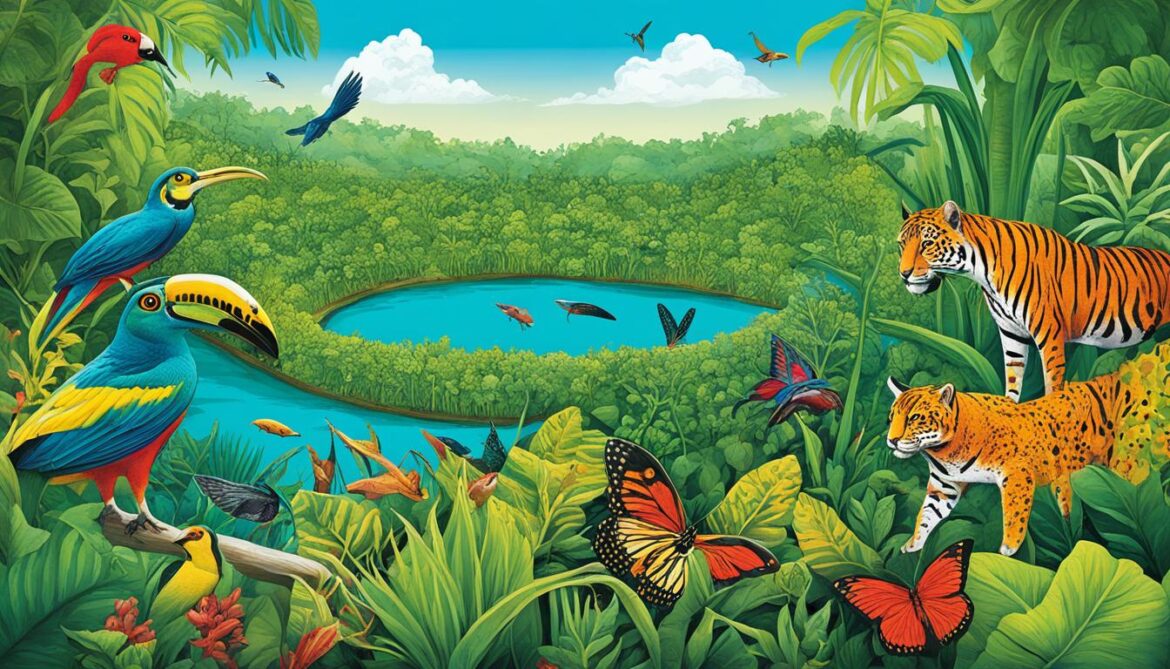
| Institution | Mandate |
|---|---|
| Environmental Protection Agency (EPA) | Overall natural resources management, policy formulation, compliance enforcement |
| Protected Areas Commission (PAC) | Management and sustainable development of protected areas |
| Wildlife Conservation and Management Commission (WCMC) | Protection and sustainable management of wildlife populations |
| Ministry of Natural Resources and the Environment | Collaboration and governance in biodiversity conservation |
| Department of Environment | Collaboration and governance in biodiversity conservation |
Monitoring and Reviewing Implementation
Guyana recognizes the importance of monitoring and reviewing the implementation of biodiversity conservation efforts. By establishing robust mechanisms, the country aims to ensure the effectiveness of its conservation strategies and make informed decisions for the future.
While there is a need to improve the level of ecological baseline data, Guyana has made progress through various biodiversity studies and assessments conducted across different regions. These studies provide valuable insights into the state of Guyana’s biodiversity and help identify areas that require immediate attention.
The Environmental Protection Agency (EPA) plays a vital role in monitoring and enforcing compliance with environmental regulations through permit conditions. Through compliance audits and assessments, the EPA ensures that biodiversity conservation efforts are being carried out effectively.
In addition to the EPA, other agencies, organizations, and research institutions conduct biodiversity studies and research. These initiatives generate valuable data that informs decision-making in biodiversity conservation. By analyzing this data, Guyana can identify trends, patterns, and potential threats to its biodiversity, enabling more effective conservation strategies.
Furthermore, Guyana recognizes the importance of national assessments in evaluating the overall progress of biodiversity conservation efforts. These assessments provide a comprehensive overview of the country’s biodiversity status, pinpointing areas that need improvement and highlighting successes.

Key Mechanisms for Monitoring and Reviewing Implementation
The table below summarises some of the key mechanisms in place for monitoring and reviewing the implementation of biodiversity conservation efforts in Guyana:
| Mechanism | Description |
|---|---|
| Environmental Protection Agency (EPA) | Conducts compliance audits and assessments to ensure adherence to environmental regulations. |
| Research Institutions and Organizations | Conduct biodiversity studies and research to generate data for decision-making. |
| National Assessments | Evaluate the overall progress of biodiversity conservation efforts in the country. |
By combining these monitoring mechanisms, Guyana is able to track the effectiveness of its conservation efforts, identify areas for improvement, and make informed decisions to safeguard its diverse and unique biodiversity.
Impacting Economic Sectors and Biodiversity
Several economic sectors in Guyana play a crucial role in shaping the country’s biodiversity. The forestry, mining, agriculture, infrastructure, tourism, oil & gas, pharmaceutical & manufacturing, and banking sectors are among the key contributors to Guyana’s economy, but they also have the potential to impact its rich biodiversity.
The forestry sector, for example, relies heavily on the country’s abundant natural resources, including its diverse flora and fauna. Sustainable forestry practices are essential to minimize habitat destruction, protect endangered species, and maintain a healthy balance within ecosystems. By implementing responsible logging and reforestation strategies, the forestry sector can contribute to biodiversity conservation and ensure the long-term viability of Guyana’s forests.
The mining sector, particularly gold mining, has a significant impact on biodiversity due to deforestation, sedimentation of waterways, and pollution from mercury use. Implementing stricter environmental regulations, promoting responsible mining practices, and supporting sustainable alternatives can help mitigate the negative effects on biodiversity.
The agricultural sector, which includes both traditional farming and large-scale plantations, can impact biodiversity through deforestation, land degradation, and the use of chemical pesticides and fertilizers. Encouraging sustainable farming practices, promoting agroforestry, and investing in organic farming methods can help preserve biodiversity while promoting food security and rural development.
Infrastructure development, such as road construction and urbanization, can fragment ecosystems, disrupt wildlife habitats, and contribute to habitat loss. It is essential for the government and stakeholders to carefully plan and implement infrastructure projects that consider the environmental impact and incorporate measures to minimize negative effects on biodiversity.
Tourism, an increasingly important economic sector for Guyana, relies heavily on the country’s natural attractions, including its diverse ecosystems and wildlife. Sustainable tourism practices, such as eco-tourism and wildlife conservation initiatives, can help generate revenue while protecting biodiversity. By promoting responsible tourism and supporting community-based conservation efforts, the sector can contribute to both economic growth and biodiversity conservation.
The oil and gas industry, with the recent discoveries of significant oil reserves off Guyana’s coast, presents both opportunities and challenges for biodiversity conservation. Stricter environmental regulations, robust monitoring and compliance mechanisms, and investment in renewable energy can help mitigate the industry’s ecological footprint and promote sustainable development.
The pharmaceutical and manufacturing industry relies on the rich biodiversity of Guyana for the discovery and development of potential medicinal plants and natural resources. Responsible sourcing practices, ethical research collaborations, and the integration of traditional knowledge can ensure that the industry benefits from biodiversity while preserving it for future generations.
The banking sector, as a critical part of Guyana’s economy, has an opportunity to support sustainable and biodiversity-friendly investments. By incorporating environmental and social criteria into financing decisions, promoting green financing, and supporting initiatives that contribute to biodiversity conservation, the banking sector can play a role in steering economic activities towards sustainability.
“Integrating biodiversity planning and conservation into these key economic sectors is crucial for ensuring sustainable development and the protection of Guyana’s unique biodiversity,” says Dr. Jane Williams, a prominent environmental scientist.
Investment in Sustainable Development
By recognizing the interdependence between economic sectors and biodiversity, Guyana has the opportunity to align its goals for economic growth with the protection and conservation of its natural heritage. The challenge lies in balancing economic development with sustainable practices that safeguard the environment and biodiversity for future generations.
| Sector | Potential Impact on Biodiversity |
|---|---|
| Forestry | Deforestation, habitat destruction, ecosystem disruption |
| Mining | Deforestation, water pollution, habitat degradation |
| Agriculture | Land degradation, habitat loss, chemical pollution |
| Infrastructure | Habitat fragmentation, ecosystem disruption |
| Tourism | Habitat disturbance, wildlife exploitation |
| Oil & Gas | Environmental pollution, climate change impacts |
| Pharmaceutical & Manufacturing | Overexploitation of natural resources |
| Banking | Investment in unsustainable practices |
By implementing sustainable practices, adopting responsible policies, and promoting biodiversity conservation across these sectors, Guyana can achieve economic prosperity while safeguarding its remarkable biodiversity. Through collaboration between the government, businesses, local communities, and civil society organizations, Guyana has the potential to become a global leader in sustainable development and biodiversity conservation.
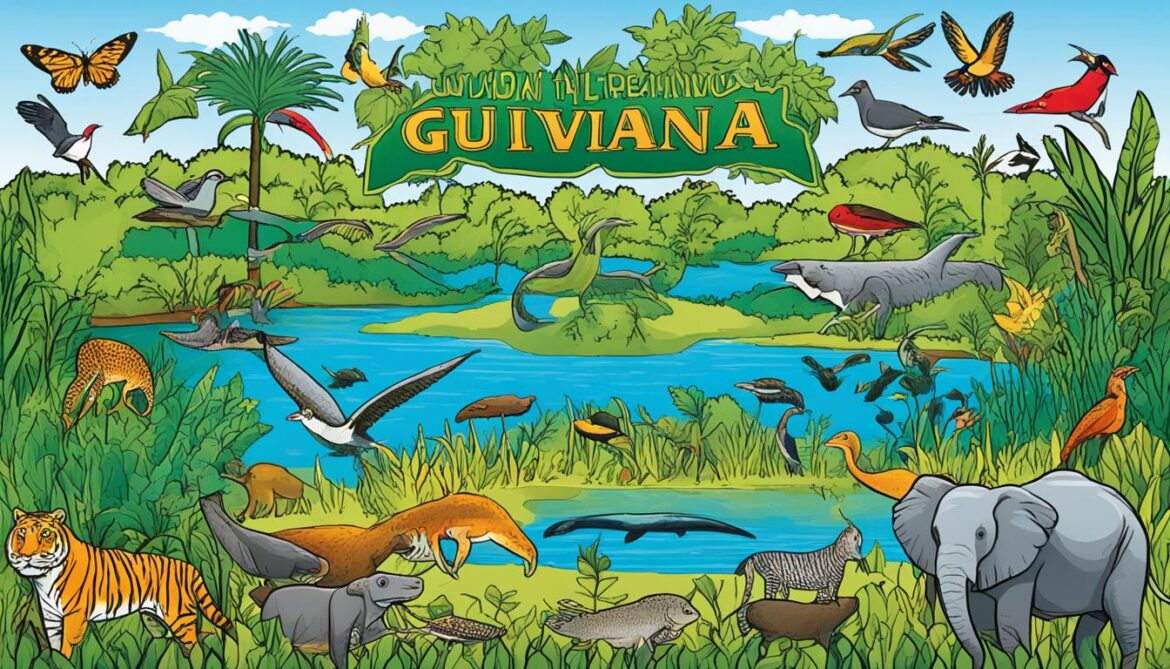
Impacts of Climate Change on Biodiversity
Climate change poses significant risks to Guyana’s biodiversity. The rising global temperatures are leading to habitat loss and changes in ecosystems, affecting the availability of food and water for wildlife. Extreme weather events such as floods, droughts, and storms further contribute to the degradation of biodiversity habitats.
As temperatures increase, habitats that are essential for the survival and reproduction of many plant and animal species are being altered or lost completely. This habitat loss disrupts the delicate balance of ecosystems and can result in the decline or extinction of species.
In addition to habitat loss, climate change also affects the availability of food and water for wildlife. Changes in rainfall patterns and increased evaporation rates can lead to droughts, reducing the availability of water sources. Limited water availability not only impacts the survival of species but also affects their ability to reproduce and find food.
Extreme weather events, such as floods, droughts, and storms, further exacerbate the impacts of climate change on biodiversity. These events can destroy habitats, displace species, and disrupt the delicate balance of ecosystems. As a result, biodiversity is further compromised, and species are pushed to the brink of extinction.
It is crucial to address climate change and its impacts on biodiversity to ensure the long-term survival of Guyana’s unique flora and fauna. Efforts must be made to mitigate greenhouse gas emissions, protect and restore habitats, and promote sustainable practices that support biodiversity conservation.
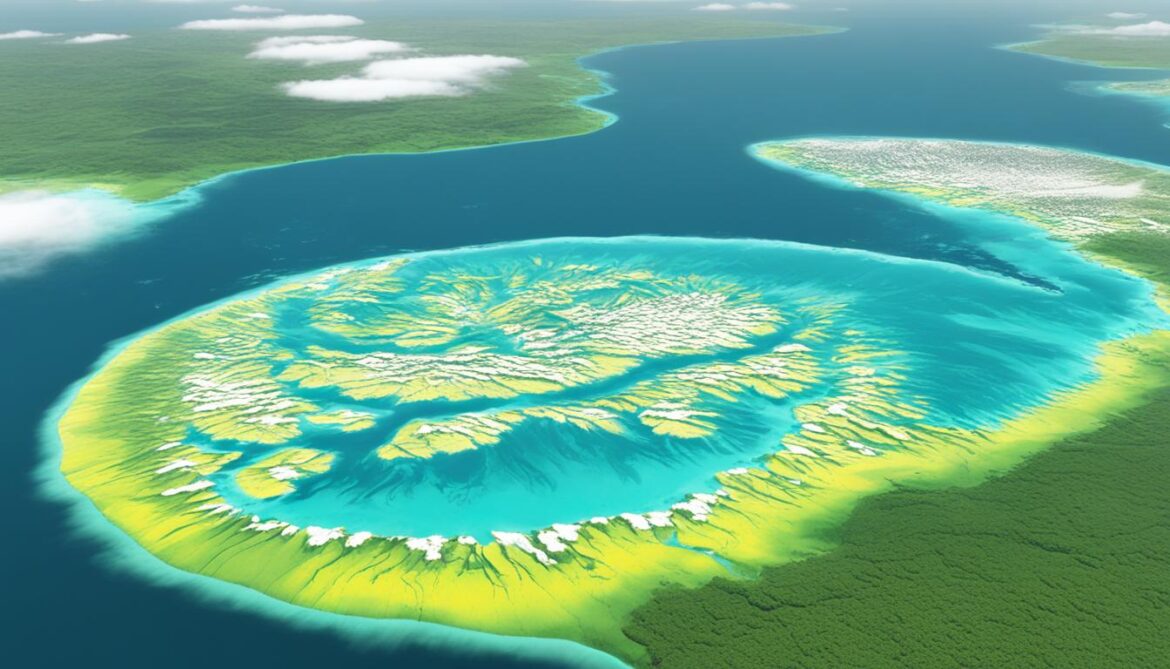
| Climate Change Impacts | Effects on Biodiversity |
|---|---|
| Rising global temperatures | Habitat loss and alterations |
| Changes in rainfall patterns | Reduced food and water availability |
| Increased frequency of extreme weather events | Destruction of habitats and disruptions in ecosystems |
The Importance of Biodiversity Conservation for Sustainable Development
Biodiversity conservation plays a crucial role in ensuring sustainable development in Guyana. The preservation of Guyana’s rich biodiversity is essential for maintaining the health and resilience of its ecosystems, providing a range of vital services that contribute to the well-being of both nature and people.
Healthy ecosystems support the provision of ecosystem services that are fundamental to human survival and economic development. Clean air, freshwater, fertile soils, and food production are all examples of the invaluable ecosystem services that biodiversity provides.
Moreover, biodiversity conservation efforts have significant socio-economic benefits for local communities, particularly in the hinterland regions of Guyana. These efforts promote poverty reduction by creating employment opportunities and supporting community-based economies centered around sustainable natural resource use.
By preserving biodiversity, Guyana safeguards the provision of ecosystem services that are essential for economic growth. This includes sectors such as tourism, where Guyana’s unique flora and fauna attract visitors from around the world, contributing to local economies.
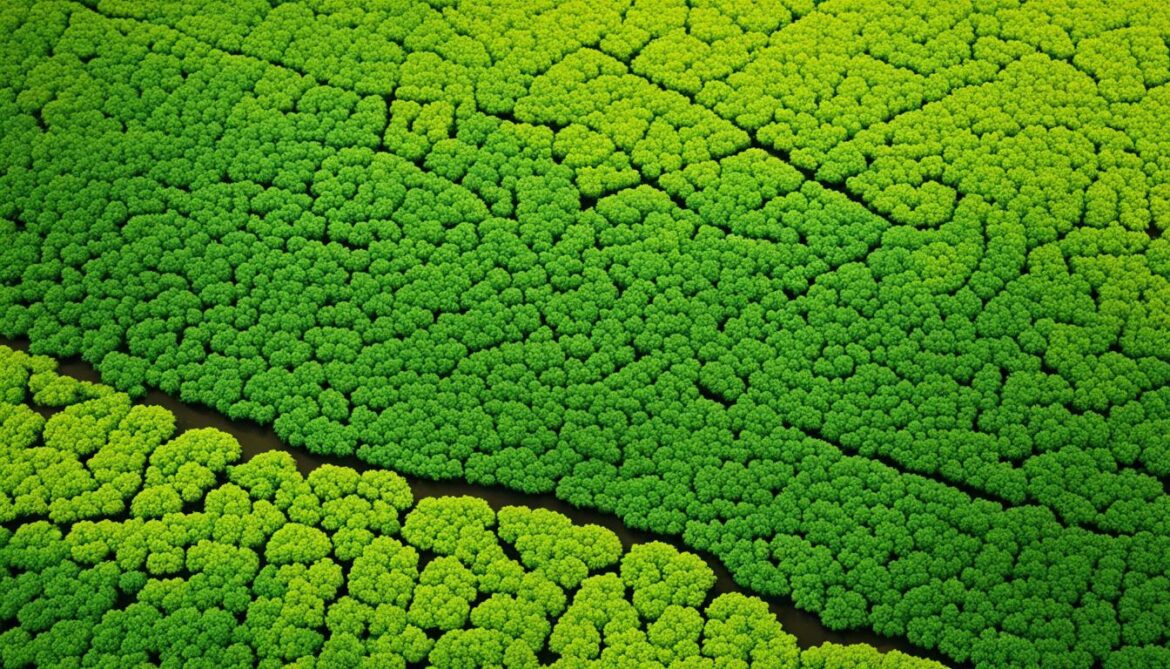
Conserving biodiversity is not just about protecting individual species or habitats; it is about safeguarding the delicate balance of nature that sustains all life on Earth.
Furthermore, biodiversity conservation is a vital component of Guyana’s sustainable development agenda, aligning environmental protection with economic growth. By integrating biodiversity considerations into development planning and decision-making processes, Guyana can ensure the long-term sustainability of its natural resources.
Nurturing a Synergistic Relationship
Biodiversity conservation and sustainable development are not mutually exclusive; they go hand in hand. By prioritizing biodiversity conservation, Guyana can achieve a harmonious balance between economic growth and environmental preservation.
Efforts to conserve biodiversity must be embedded within policies, legislation, and development strategies to foster a sustainable future. This includes the integration of ecosystem-based approaches in sectors such as forestry, mining, agriculture, and infrastructure development, ensuring that economic activities are conducted in an environmentally responsible manner.
Additionally, promoting public awareness and fostering a sense of stewardship among the population can enhance support for biodiversity conservation and sustainable development initiatives. Education and engagement play key roles in empowering individuals and communities to make informed decisions that contribute to a more sustainable future.
The Road Ahead
Continued commitment to biodiversity conservation is essential for Guyana’s sustainable development journey. Despite the challenges and competing interests, there are significant opportunities for further progress.
Building strong policy coordination mechanisms, enhancing capacity building efforts, and strengthening compliance enforcement can help overcome the challenges facing biodiversity conservation. Collaborative partnerships between government agencies, NGOs, local communities, and indigenous groups can facilitate knowledge sharing, innovation, and effective implementation of conservation measures.
As Guyana moves forward, it is crucial to seize these opportunities and create a future where sustainable development and the preservation of biodiversity go hand in hand. By valuing and protecting Guyana’s natural heritage, the country can pave the way for a prosperous and sustainable future for generations to come.
Current Challenges and Future Opportunities
Guyana is committed to biodiversity conservation, but it faces several challenges in achieving this goal. One of the primary challenges is conflicting legislation, which hinders effective coordination and implementation of conservation efforts. Additionally, there is limited knowledge and understanding of Guyana’s diverse ecosystems and the species that inhabit them. This lack of information can impede targeted conservation actions.
To overcome these challenges, policy coordination is crucial. Aligning legislation and policies across different sectors can enhance the effectiveness of biodiversity conservation strategies. By fostering collaboration between government agencies, non-governmental organizations (NGOs), and local communities, Guyana can leverage collective expertise and resources, further strengthening its conservation efforts.
Another important aspect is capacity building. Investing in training and education programs for individuals involved in biodiversity conservation will enhance their knowledge and skills in sustainable practices. This includes capacity building in monitoring techniques, research methodologies, and ecosystem management. With an empowered workforce equipped with the necessary skills, Guyana can better protect its unique biodiversity.
Public awareness is key to fostering a strong culture of biodiversity conservation. By engaging and educating the public on the value of Guyana’s natural heritage, individuals can become active participants in conservation efforts. This can be achieved through educational campaigns, community outreach programs, and the promotion of eco-tourism, highlighting the benefits of sustainable practices.
“The future of Guyana’s biodiversity lies in addressing these challenges and seizing the opportunities before us. By coordinating policies, building capacity, and raising public awareness, we can ensure the long-term sustainability of our precious ecosystems and the species they support.”
In conclusion, Guyana’s biodiversity conservation efforts face challenges such as conflicting legislation, limited knowledge, and the need for policy coordination. However, these challenges present opportunities for improvement. Strengthening policy coordination, investing in capacity building, and raising public awareness can pave the way for more effective conservation strategies. By addressing these challenges and seizing the opportunities, Guyana can secure a brighter future for its diverse ecosystems and safeguard its unique biodiversity for generations to come.
Conclusion
Guyana’s biodiversity is a priceless treasure that must be protected for future generations. Despite facing significant threats from human activities and climate change, the country has taken important steps in implementing conservation efforts. By continuing these efforts and addressing the challenges at hand, Guyana can preserve its unique natural heritage.
In order to achieve sustainable development, it is vital for Guyana to prioritize biodiversity conservation and embrace ecosystem sustainability. By doing so, the country can strike a balance between economic growth and the preservation of its irreplaceable natural resources.
Conservation efforts in Guyana should not be seen as an isolated venture but rather as a collective responsibility. Collaboration between government agencies, non-governmental organizations, and local communities is key in ensuring the success of these endeavors. Additionally, capacity building and public awareness initiatives can further strengthen the impact of conservation efforts.
With a continued commitment to conservation, Guyana can safeguard its rich biodiversity and promote sustainable development that benefits both present and future generations. By valuing and protecting its natural heritage, Guyana sets an example for the world in harmonizing human activities with the preservation of the environment.




